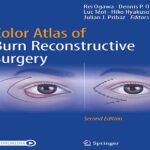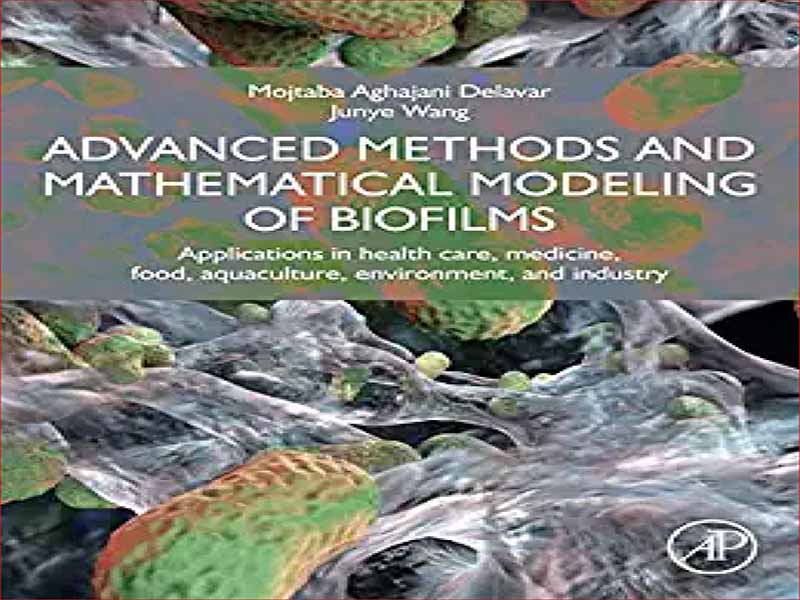- عنوان: Advanced Methods and Mathematical Modeling of Biofilm
- نویسنده: Mojtaba-Aghajani-Delavar,-Junye-Wang
- حوزه: مدلسازی ریاضی
- سال انتشار: 2022
- تعداد صفحه: 252
- زبان اصلی انگلیسی
- نوع فایل: pdf
- حجم فایل: 20.2 مگابایت
بیوفیلم ها تجمع پیچیده و ناهمگنی از میکروارگانیسم ها هستند که توسط مواد پلیمری خارج سلولی دفع کننده آنها در کنار هم قرار می گیرند. اگرچه میکروارگانیسمها میتوانند باعث بسیاری از مسائل جدی مانند عفونتهای مزمن، آلودگی مواد غذایی و خوردگی تجهیزات شوند، اما میتوان از آنها برای مواردی مانند تصفیه فاضلاب، حذف فلزات سنگین از محلهای پسماند خطرناک، تولید سوخت زیستی و تولید برق از طریق میکروبی استفاده کرد. سلول های سوختی. به دلیل تنوع زیاد کاربردهای بیوفیلم، کار زیادی برای کشف چگونگی شکل گیری بیوفیلم ها و تعامل با محیط اطرافشان انجام شده است. با این حال، رشد و تکامل بیوفیلم فعل و انفعالات بسیار پیچیده ای در بین فرآیندهای فیزیکوشیمیایی و بیولوژیکی است. چالشهای قابلتوجهی در درک فرآیندهای میکروبی وجود دارد که در آن پویایی ماکروسکوپی انتقال مواد مغذی باید با رشد باکتریهای میکروسکوپی و واکنشهای بیوشیمیایی اولیه آنها در رابطهای واکنشی یا آنزیمی، علاوه بر جنبههای میکروبیولوژیکی و/یا اکولوژیکی ارگانیسمهای «ریز» درگیر در بیوفیلمها همراه باشد. . علاوه بر این، ویژگی بین رشتهای ذاتی فرآیندهای بیوفیلم، بستری برای تحقیقات بینرشتهای در زمینههای مختلف، از جمله رسوبزدایی، اکولوژی میکروبی خاک، زیست پالایی، مهندسی فاضلاب، مهندسی بافت، بیوسنتز و عفونتهای مزمن فراهم میکند. اگر بخواهیم عملکرد بیوفیلم را به بیوتکنولوژی پیوند دهیم، این به دانشمندان و مهندسان این امکان را میدهد تا دستگاهها یا فرآیندهای خود را برای جلوگیری از بیوفیلمهای مضر یا ترویج بیوفیلمهای مفید در کاربردهای بالینی، زیستمحیطی یا صنعتی دوباره طراحی کنند. از این رو، برای درک و کنترل نحوه تعامل باکتری ها با محیط و فضای خود و تأثیر بر تولید یا تخریب انواع ترکیبات در یک محیط وابسته به هم، مانند مواد مغذی، دما، pH و رطوبت، ضروری است. مدلهای ریاضی برای بیوتکنولوژی مدرن هم در تحقیقات و هم در عمل مهندسی حیاتی هستند. بنابراین، مدلهای بسیاری از بیوفیلمها برای شامل ماژولهای مختلف راکتور بیوفیلم توسعه یافتهاند. مدلسازی عملکرد مشابهی را در میکروبیولوژی قرن بیست و یکم ایفا میکند که میکروسکوپ در قرنهای گذشته انجام میداد. بدون شک ضروری ترین ابزار مطالعه برای بررسی پدیده ها و فرآیندهای پیچیده در تمام بخش های بیوفیلم، از سلول های فردی گرفته تا اکوسیستم های جامعه میکروبی است. ما بر این باوریم که مدل ریاضی از نظر درک ما از نحوه تعامل بیوفیلمها با محیطشان و همچنین نحوه انتقال آنها به بیوتکنولوژیها و تشخیصها و درمانهای مبتنی بر میکروبیوم، پتانسیل زیادی دارد.
Biofilms are a complex and heterogeneous aggregation of microorganisms held together by their excreting extracellular polymer substances. Even though microorganisms can cause many serious issues, such as chronic infections, food contamination, and equipment corrosion, they can also be used constructively for things such as wastewater treatment, heavy metal removal from hazardous waste sites, biofuel production, and power generation through microbial fuel cells. Because of the great variety of biofilm applications, a lot of work has gone into figuring out how biofilms form and interact with their surroundings. However, biofilm growth and evolution are very complex interactions among physicochemical and biological processes. Considerable challenges exist in understanding microbial processes where macroscopic dynamics of nutrient transport must be coupled with microscopic bacteria growth and their elementary biochemical reactions at reactive or enzymatic interfaces, in addition to the microbiological and/or ecological aspects of the “micro” organisms involved in biofilms. Furthermore, biofilm processes’ intrinsic interdisciplinary character provides a platform for interdisciplinary research from a variety of fields, including biofouling, soil microbial ecology, bioremediation, wastewater engineering, tissue engineering, biosynthesis, and chronic infections. If we are to be able to link biofilm function to biotechnologies, this will allow scientists and engineers to redesign their devices or processes to inhibit harmful biofilms or to promote beneficial ones in clinical, environmental, or industrial applications. Hence, it is essential for understanding and controlling how bacteria interact with their environment and space and affect the production or degradation of a variety of compounds in an interdependent environment, such as nutrients, temperature, pH, and moisture. Mathematical models are critical to modern biotechnologydboth in research and in engineering practice. Thus, many models of biofilms have been developed to include various biofilm reactor modules. Modeling plays a similar function in 21st-century microbiology as the microscope did in previous centuries; it is undoubtedly the most essential study tool for examining complicated phenomena and processes in all sectors of biofilms, from individual cells to microbial community ecosystems. We believe that the mathematical model has a lot of potential in terms of furthering our understanding of how biofilms interact with their environments, as well as how they are transferred into biotechnologies and microbiome-based diagnostics and therapies.
این کتاب را میتوانید بصورت رایگان از لینک زیر دانلود نمایید.
Download: Advanced Methods and Mathematical Modeling of Biofilm



































نظرات کاربران